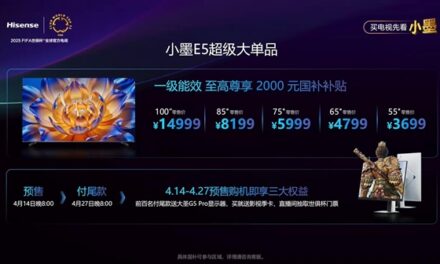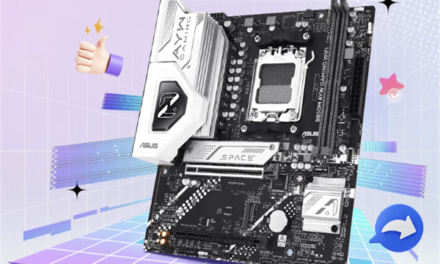
What Is The Impact Of Technology On Commercial Fleet Management?

In an increasingly tech-driven world, the impact of technology on commercial fleet management cannot be overstated. With advances in transportation systems and smart vehicle solutions at a fever pitch, we’re now able to manage larger fleets with greater efficiency than ever before — leading to improved safety, lower fuel costs, and even environmental sustainability gains. In this blog post, we’ll discuss how cutting-edge technologies are transforming the way fleets are operated in both large corporations and small businesses alike, exploring the different strategies that can help optimize performance while also positively shaping your brand image to customers. We’ll also discuss some of the challenges related to these technologies today so you can make informed decisions as you prepare for tomorrow’s business climate. Read on to discover how technology is revolutionizing commercial fleet management!
Importance Of Dispatch Radios
One of the key pieces of technology in fleet management is the dispatch radio. Dispatch radios serve as the backbone of communication within a fleet, facilitating real-time communication between drivers and headquarters. The team behind tracknetonline.com/2-way-radio says that this ensures that any changes in schedules, routes, or unforeseen circumstances can be quickly relayed and addressed, minimizing downtime and disruptions. Moreover, in the case of emergencies or technical issues, dispatch radios provide an immediate line of communication for assistance, making them indispensable for the safety and efficiency of fleet operations. However, it’s important to choose reliable dispatch radios, that have good signal coverage and can withstand the demanding conditions of fleet operations.
Automation in Fleet Management
Automation in fleet management has emerged as a game-changer, streamlining processes and enhancing productivity. Today, automated systems can perform a range of tasks, from scheduling maintenance checks to monitoring driver behavior and tracking fuel consumption. For example, telematics systems, equipped with GPS and onboard diagnostics, can collect a wealth of data from vehicles, providing fleet managers with real-time insights into their operations. This can significantly reduce manual record-keeping and data entry, freeing up valuable time for other tasks.
Similarly, predictive maintenance tools use data to anticipate potential mechanical issues, allowing for proactive vehicle maintenance. Additionally, route optimization algorithms can analyze traffic patterns and road conditions to determine the most efficient routes, leading to reduced fuel consumption and improved delivery times. Ultimately, automation is a powerful tool for commercial fleet management, offering the potential to increase efficiency, reduce costs, and improve service quality. However, implementing these technologies requires careful planning and a thorough understanding of their potential benefits and challenges.
Benefits of Technology for Drivers, Managers, and Customers
For drivers, technology offers a range of safety and convenience benefits. Advanced systems such as GPS navigation and route optimization tools help drivers map the most efficient routes, reducing stress and enhancing productivity. Vehicle diagnostics and predictive maintenance tools alert drivers to potential mechanical issues before they become serious problems, promoting safety and reducing the likelihood of unexpected breakdowns.
Managers stand to gain from the improved oversight and operational efficiency brought about by technology. Fleet management systems provide real-time data on vehicle locations, fuel consumption, and driver behavior, allowing managers to monitor and optimize fleet performance. Automation of routine tasks such as scheduling and record-keeping saves time and minimizes human error.
Customers, too, reap the benefits of technological advancement in fleet management. Real-time tracking systems allow for precise delivery estimates and status updates, improving transparency and customer service. Furthermore, efficient routing and fuel management contribute to environmental sustainability, a value increasingly important to today’s consumers. Thus, technology in commercial fleet management serves to enhance customer satisfaction and boost brand reputation.
Using GPS Tracking Technology to Monitor Driver Performance
GPS tracking technology is a cornerstone of modern fleet management, providing invaluable insights into driver performance. This technology allows fleet managers to monitor driver behaviors such as speed, idling time, hard braking, rapid acceleration, and adherence to routes. By collecting and analyzing this data, fleet managers can identify any behaviors that may be unsafe or inefficient, and provide targeted coaching to improve performance.
GPS tracking systems can help encourage responsible driving by holding drivers accountable for their actions on the road. This increased oversight not only contributes to improved road safety but can also lead to significant savings in fuel and maintenance costs over time. However, it’s essential to ensure that the use of GPS tracking technology respects privacy laws and regulations and that drivers are informed and consenting to its use.
Data Analytics in Fleet Management
Data analytics has become an integral part of successful fleet management, guiding decision-making and strategic planning. By gathering and analyzing data from vehicles, operators, and external sources, fleet managers can gain a comprehensive understanding of their operations. This intelligence allows them to identify patterns, trends, and inefficiencies, and make data-driven decisions to enhance performance.
For instance, fuel consumption data can pinpoint inefficient driving habits or mechanical issues, while journey data can reveal opportunities for route optimization. Predictive analytics can forecast future trends based on historical data, helping to anticipate and mitigate potential issues and capitalize on opportunities. Consequently, data analytics in fleet management enables smarter, more efficient, and more proactive decision-making, driving continuous improvement and strategic advantage. However, harnessing the full potential of data analytics requires robust systems, skilled personnel, and a culture of data-driven decision-making.
Best Practices for Utilizing Technology in Commercial Fleet Management
To harness the full potential of technology in commercial fleet management, certain best practices can be followed. First, clearly define your objectives. Identify the challenges your fleet is facing and determine how technology can help address them. This will guide your choice of systems and tools and ensure that they align with your needs.
Second, invest in training. The most advanced technology is of little use if it isn’t understood or used correctly. Training should be ongoing to keep up with updates and new features.
Third, maintain open communication with drivers. Make sure they understand the purpose and benefits of technology and address any concerns they may have. Technology should be seen as a tool to help drivers, not as a means of surveillance.
In conclusion, technology has revolutionized commercial fleet management, offering a range of benefits for drivers, managers, and customers. However, successful implementation requires careful planning and an understanding of best practices to maximize its potential. As technology continues to advance, it will undoubtedly play an increasingly important role in the industry, driving efficiency, safety, and customer satisfaction.


























